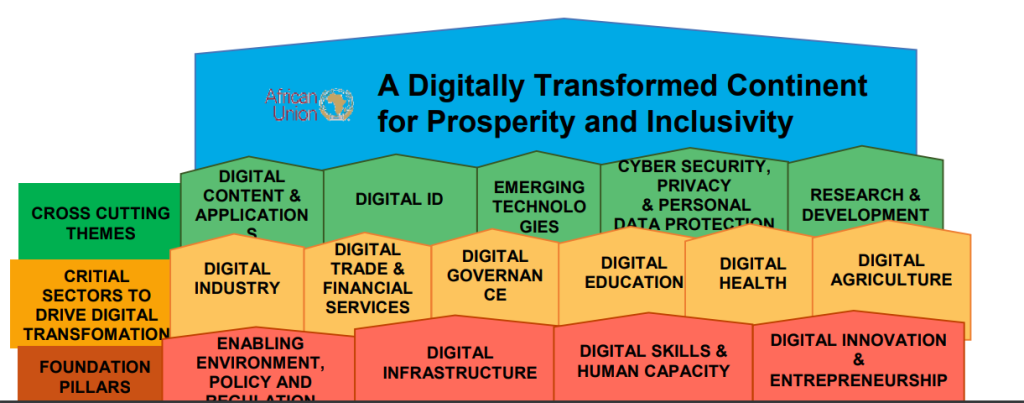Unlocking Africa’s Potential: The Role of Digital Transformation in Shaping Africa’s Future

Introduction
Digital transformation holds immense potential to revolutionize economies worldwide, and Africa is no exception. With digital technologies rapidly evolving, African states stand on the cusp of unprecedented opportunities to drive growth and improve the quality of life for millions of people. Key sectors such as healthcare, education, commerce, and public administration are poised to benefit from this shift, as digital technologies offer the ability to create new economic opportunities, improve service delivery, and bridge the digital divide by connecting remote communities to vital information and services.
Recognizing the power of these technologies, the African Union (AU) has placed digital transformation at the forefront of its development agenda. The AU’s Digital Transformation Strategy for Africa (2020-2030) lays out a comprehensive framework to “harness digital technologies and innovation to transform African societies and economies.” The ultimate goal is to promote the continent’s integration, foster inclusive economic growth, stimulate job creation, and ensure that Africa owns and controls its digital management tools.

The Vision: Digital Transformation for Sustainable Growth
At the heart of the AU’s strategy is a vision of a digitally inclusive Africa that uses modern technology to foster socio-economic progress and reduce inequality. By 2030, Africa aims to establish a Digital Single Market that supports the free movement of people, services, and capital. This integrated digital market will enhance cross-border trade under the African Continental Free Trade Area (AfCFTA) and drive the continent’s overall economic growth.
Moreover, the strategy aligns with the broader objectives of Agenda 2063 and the Sustainable Development Goals (SDGs). By leveraging digital technologies, Africa can expedite progress towards poverty eradication, improved access to healthcare, quality education, and sustainable economic growth. The digital transformation strategy is thus not just a tech-driven initiative but a pathway to achieving long-term development aspirations.

Bridging the Digital Divide
Digital transformation offers the potential to bridge the digital divide, ensuring that even the most remote communities have access to modern services and opportunities. This is particularly important in Africa, where rural and underserved areas often face limited access to essential services. By deploying affordable digital tools and technologies, once isolated communities can now access healthcare services, educational resources, and economic opportunities.
For example, e-learning platforms can connect students in remote areas to quality education, while telemedicine solutions can provide healthcare services to populations that previously lacked access to medical facilities. Digital inclusion also enables entrepreneurs to participate in the broader economy, whether through online marketplaces or digital finance tools, creating pathways for job creation and poverty reduction.

Fostering Economic Growth and Job Creation
The AU’s digital transformation strategy places a strong emphasis on using technology to foster economic growth and stimulate job creation. The integration of digital tools into key sectors such as agriculture, manufacturing, and finance will unlock new markets, streamline processes, and create a wealth of job opportunities for Africa’s growing youth population.
One of the strategy’s specific goals is to empower all citizens digitally by 2030, ensuring access to basic e-services and content that is locally developed and hosted on African platforms. This includes leveraging smart devices manufactured on the continent to meet local needs, which in turn boosts Africa’s technology manufacturing sector and reduces reliance on imported goods.





